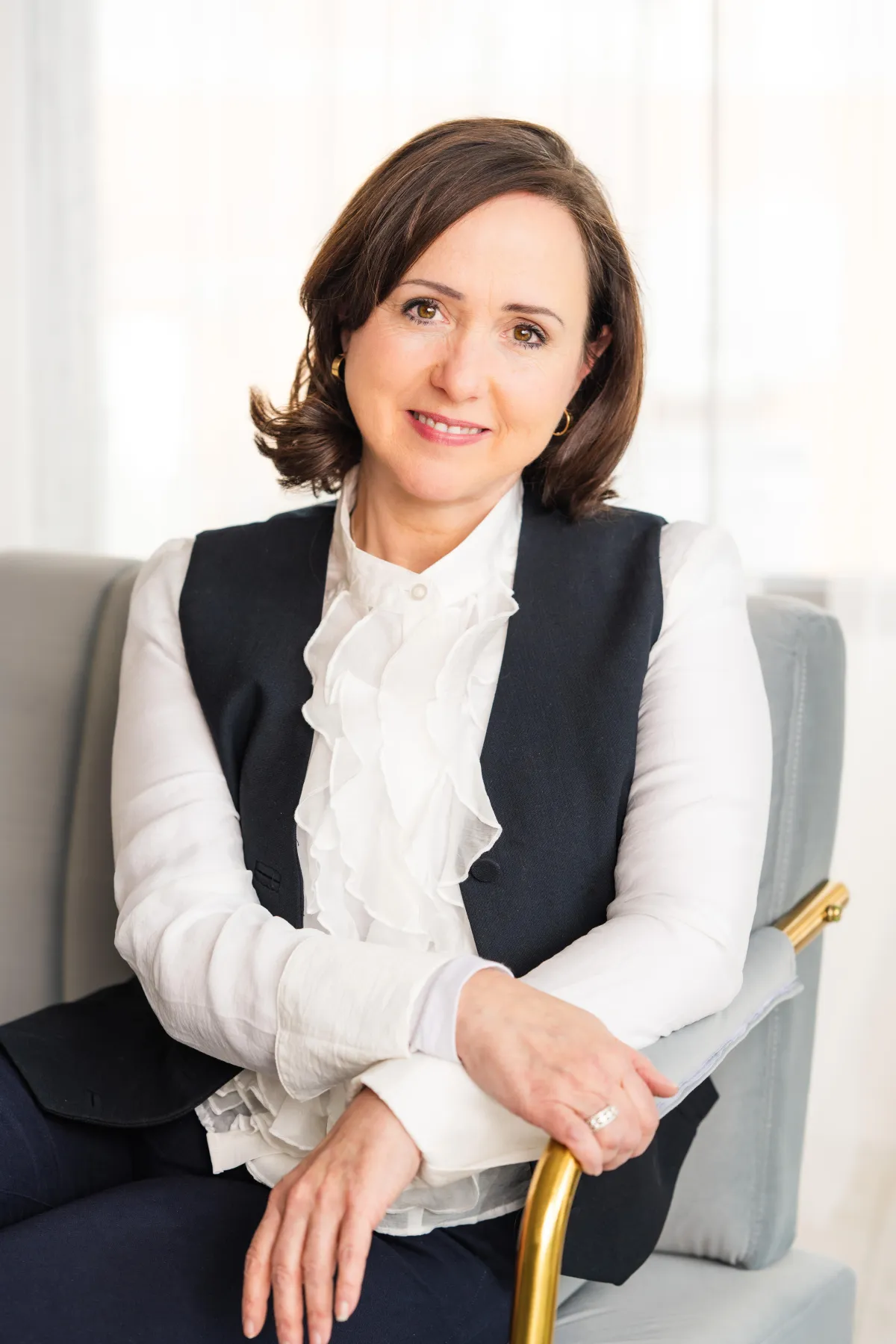
Sexual Frequency: Celebrate the Differences
Feeling comfortable with people who are similar to you is usually easy. The trick is to feel comfortable with someone who is quite different than you. If you are in a marriage for ease, hoping that your partner will magnify all of your good qualities and always agree with you, any differences between the two of you are likely to be troubling. But having every thought and behavior condoned, every opinion validated, is not going to challenge you to be a better, more understanding person.


Sexual Frequency: Celebrate the Differences
Feeling comfortable with people who are similar to you is usually easy. The trick is to feel comfortable with someone who is quite different than you. If you are in a marriage for ease, hoping that your partner will magnify all of your good qualities and always agree with you, any differences between the two of you are likely to be troubling. But having every thought and behavior condoned, every opinion validated, is not going to challenge you to be a better, more understanding person.

Here Is Some Good Counsel: Celebrate The Differences!
A well-known therapist, Dr. David Schnarch, said, “Marriage is a people-growing machine.” He goes on to explain that marriage is intended to challenge your long-held assumptions, your life routines, even your personal, political, and religious perspectives. Because you are two people trying to build a marriage, there is going to be a need to work through some differences. This struggle to understand each other is the crux of marriage. How well do you handle this challenge? Do you fight and insist on your way? Do you pout, give the silent treatment, create distance, or resent your partner for being different from you? Or do you step back, really listen to learn, find common ground, and negotiate a solution? Do you look at yourself and challenge your own contributions to the conflict and acknowledge your own need to confront yourself at times? The last option takes skill, time, and a better knowledge of yourself and your partner.

One area where differences sometimes emerge is frequency of sex. Some partners think sex needs to be a daily activity and some think it could happen far less, maybe a couple of times a month. No matter where you fall on this spectrum, the key is to avoid allowing this difference to create a wedge between you and your partner. When this conflict arises, recognize that this difference is actually an opportunity for greater intimacy because it provides you with an opportunity to work together, negotiate, and learn more about yourself and your partner.
Talk to each other about why you each desire sex as frequently (or infrequently) as you do.
Talk about the meaning of sex for you. Is sex a symbol of love? Is it a physical release of tension? Does sex mean you are feeling emotionally close, or is sex a mechanism that helps you to feel emotionally close?
Does physical intimacy need to include intercourse? Or can physical intimacy include just snuggling, kissing, or lingering in a long embrace?
Is there enough emotional connection in the routine of your relationship that encourages physical connection?
Are there sexual attitudes that inhibit your sexual expression? Or are there sexual attitudes you hold that have created an obsessive approach toward sex? Did these attitudes come from your family of origin, exposure to porn, or other socialized ideas?
Once you address questions like these you will likely feel more intimacy with each other and have a better understanding of your own and your partner’s approach to sexual intimacy. This type of communication creates deeper understanding and a healthy curiosity about how you each came to hold the perspectives that you hold.


Here Is Some Good Counsel: Celebrate The Differences!
A well-known therapist, Dr. David Schnarc, said, “Marriage is a people-growing machine.” He goes on to explain that marriage is intended to challenge your long-held assumptions, your life routines, even your personal, political, and religious perspectives. Because you are two people trying to build a marriage, there is going to be a need to work through some differences. This struggle to understand each other is the crux of marriage. How well do you handle this challenge? Do you fight and insist on your way? Do you pout, give the silent treatment, create distance, or resent your partner for being different from you? Or do you step back, really listen to learn, find common ground, and negotiate a solution? Do you look at yourself and challenge your own contributions to the conflict and acknowledge your own need to confront yourself at times? The last option takes skill, time, and a better knowledge of yourself and your partner.
One area where differences sometimes emerge is frequency of sex. Some partners think sex needs to be a daily activity, and some think it could happen far less, maybe a couple of times a month. No matter where you fall on this spectrum, the key is to avoid allowing this difference to create a wedge between you and your partner. When this conflict arises, recognize that this difference is actually an opportunity for greater intimacy because it provides you with an opportunity to work together, negotiate, and learn more about yourself and your partner.
Talk to each other about why you each desire sex as frequently (or infrequently) as you do.
Talk about the meaning of sex for you. Is sex a symbol of love? Is it a physical release of tension? Does sex mean you are feeling emotionally close, or is sex a mechanism that helps you to feel emotionally close?
Does physical intimacy need to include intercourse? Or can physical intimacy include just snuggling, kissing, or lingering in a long embrace?
Is there enough emotional connection in the routine of your relationship that encourages physical connection?
Are there sexual attitudes that inhibit your sexual expression? Or are there sexual attitudes you hold that have created an obsessive approach toward sex? Did these attitudes come from your family of origin, exposure to porn, or other socialized ideas?
Once you address questions like these, you will likely feel more intimacy with each other and have a better understanding of your own and your partner’s approach to sexual intimacy. This type of communication creates a deeper understanding and a healthy curiosity about how you each came to hold the perspectives that you hold.

Charlotte Bronte wisely observed in Jane Eyre, “Remember the shadows are just as important as the light.” Knowing your partner’s shadows and light is essential to your intimacy.
We have been influenced by many people, ideas, and experiences in our lives. When we share these things with our partner, they can better see us and feel compassion for our perspective. We may need to challenge our own unhealthy thoughts and behaviors. We may need to challenge our partner’s unhealthy thoughts or behaviors. Don’t feel discouraged if this process takes some time. This is exactly what Dr. Schnarch meant by, “Marriage is a people growing machine.”

Charlotte Bronte wisely observed in Jane Eyre, “Remember the shadows are just as important as the light.” Knowing your partner’s shadows and light is essential to your intimacy.
We have been influenced by many people, ideas, and experiences in our lives. When we share these things with our partner, they can better see us and feel compassion for our perspective. We may need to challenge our own unhealthy thoughts and behaviors. We may need to challenge our partner’s unhealthy thoughts or behaviors. Don’t feel discouraged if this process takes some time. This is exactly what Dr. Schnarch meant by, “Marriage is a people growing machine.”

SO WHAT DO WE CALL A MARRIAGE WHERE ONE PARTNER WANTS SEX TWICE AS OFTEN (OR HALF AS OFTEN) AS THE OTHER PARTNER? . . . . NORMAL.
Sexual frequency differences are normal and provide a fun opportunity to create a more nuanced sexual relationship. Slow down and remember why you fell in love. Create opportunities to deepen that love through intimate, authentic, and emotional connection.
Embrace these differences in you and your partner and realize the wonderful opportunity these differences provide for intimacy. Dig in. Learn something new about why or how your partner thinks the way they do. The shadows of differences in your relationship can highlight beauty and detail that you would otherwise not see.

Chelom Leavitt
Dr. Chelom E. Leavitt teaches and researches healthy sexuality. She received her PhD from Penn State. Her research specifically examines how being present, accepting, and non-judgmental is linked to improved sexual functioning and satisfaction. Dr Leavitt’s research has been published in the top academic journals. She teaches seminars on sex and healthy relationships around the world. Chelom is married to David Leavitt, and they have eight (yes, eight) children.
SO WHAT DO WE CALL A MARRIAGE WHERE ONE PARTNER WANTS SEX TWICE AS OFTEN (OR HALF AS OFTEN) AS THE OTHER PARTNER? . . . . NORMAL.
Sexual frequency differences are normal and provide a fun opportunity to create a more nuanced sexual relationship. Slow down and remember why you fell in love. Create opportunities to deepen that love through intimate, authentic, and emotional connection.
Embrace these differences in you and your partner and realize the wonderful opportunity these differences provide for intimacy. Dig in. Learn something new about why or how your partner thinks the way they do. The shadows of differences in your relationship can highlight beauty and detail that you would otherwise not see.

Chelom Leavitt
Dr. Chelom E. Leavitt teaches and researches healthy sexuality. She received her PhD from Penn State. Her research specifically examines how being present, accepting, and non-judgmental is linked to improved sexual functioning and satisfaction. Dr Leavitt’s research has been published in the top academic journals. She teaches seminars on sex and healthy relationships around the world. Chelom is married to David Leavitt, and they have eight (yes, eight) children.

Helping individuals and couples build stronger, healthier relationships through science-backed mindfulness practices and emotional connection.
Professor, Researcher & Fulbright Fellow
Quick Links
Social Media Links
Contact Me
Newsletter Sign up
Copyright 2025. Dr. Chelom Leavitt. All Rights Reserved.

Helping individuals and couples build stronger, healthier relationships through science-backed mindfulness practices and emotional connection.
Professor, Researcher & Fulbright Fellow
Quick Links
Social Media Links
Contact Me
Newsletter Sign up
Copyright 2025. Dr. Chelom Leavitt.
All Rights Reserved.
